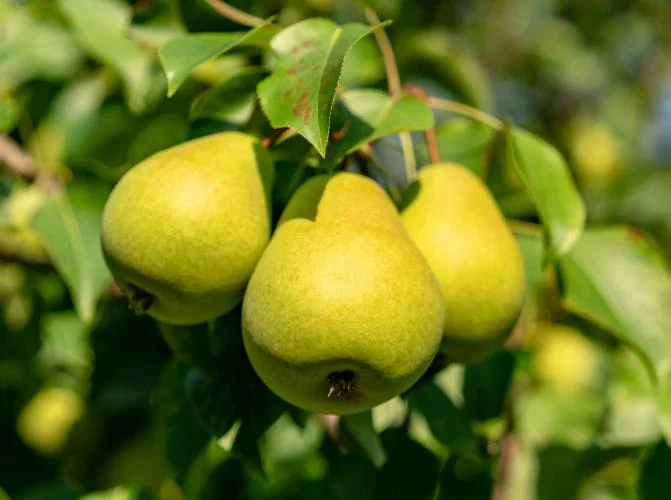Cultivating pears organically offers both a gratifying experience and a healthier choice for you and the environment. By growing pears without synthetic chemicals, you not only enjoy fruit free from harmful residues but also contribute to eco-friendly practices. This guide will take you through the essentials of planting and nurturing pear trees organically, from selecting the ideal variety to ensuring a thriving harvest.
Choosing the Right Pear Variety:
Selecting the right pear variety is crucial for successful organic cultivation. Pears vary in their climate and soil preferences, so it’s important to choose a type that suits your local conditions. Varieties such as Bartlett, Anjou, Bosc, and Comice are popular choices. Consult local nurseries or experienced growers to identify the varieties best adapted to your region’s climate and soil.
Selecting a Planting Site:
Pears thrive in well-drained soil that is fertile and has a pH between 6.0 and 7.0. Choose a sunny location that is free from shade cast by structures or other trees. Good air circulation is essential to reduce disease risk, so avoid planting in low-lying areas where air might stagnate.
Preparing the Soil:
Before planting, prepare the soil by loosening it to a depth of at least 18 inches. Enrich the soil with organic matter such as compost or aged manure to enhance its structure and fertility. Refrain from using synthetic fertilizers or chemical pesticides, as these can disrupt the beneficial organisms in the soil and impact the ecosystem’s balance.
Planting the Pear Tree:
When planting, dig a hole large enough to accommodate the root system without bending or crowding the roots. Position the tree so the graft union (the bulge where the rootstock and scion meet) sits slightly above the soil line. Backfill the hole with soil, gently firming it around the roots to eliminate air pockets. Water the tree thoroughly to settle the soil and support root establishment.
Pruning and Training:
Effective pruning and training are vital for shaping the tree and encouraging healthy growth. Start by removing damaged, diseased, or crossing branches. Aim to create an open center by eliminating competing branches and maintaining a central leader. Training the tree to a modified central leader or espalier form can enhance sunlight exposure and improve fruit quality.
Watering and Mulching:
Deep, regular watering is crucial, especially during dry spells. Ensure the soil remains consistently moist but not soggy. Apply a layer of organic mulch, such as wood chips or straw, around the base of the tree to retain moisture, suppress weeds, and regulate soil temperature.
Pest and Disease Management:
Organic pest and disease control focuses on prevention and natural remedies. Promote biodiversity by planting companion plants that attract beneficial insects and deter pests. Regularly inspect your trees for signs of pests like aphids, pear psylla, or diseases such as fire blight. Address issues with methods like handpicking insects or using organic insecticidal soap and neem oil.
Harvesting and Enjoying:
Harvest pears based on their variety, typically from late summer to early fall. Look for full-sized fruit with a slight yellowish tint. Test for ripeness by gently pressing the flesh near the stem; if it gives slightly, the pear is ready to pick. Handle the fruit carefully to avoid bruising and store it in a cool, dark place to fully ripen before savoring its delicious flavor.
Conclusion:
Growing pears organically requires patience and a commitment to maintaining nature’s balance. By adhering to these practices, you can achieve a plentiful harvest of tasty, healthy pears while supporting environmental sustainability and stewardship in your garden. Enjoy the fruits of your labor and the satisfaction of contributing to a healthier planet.
